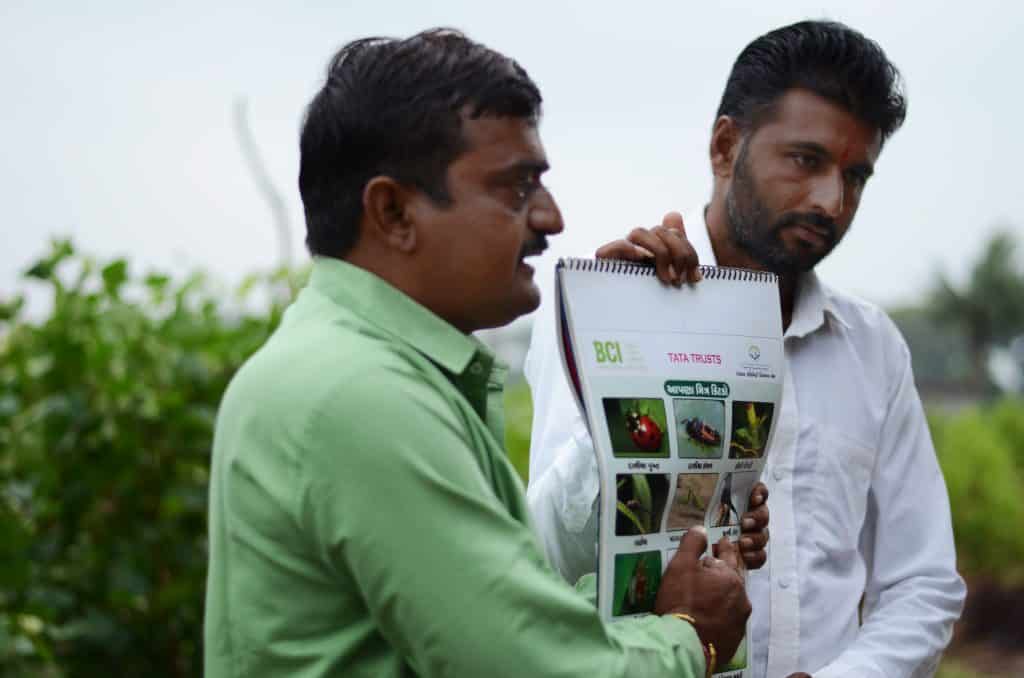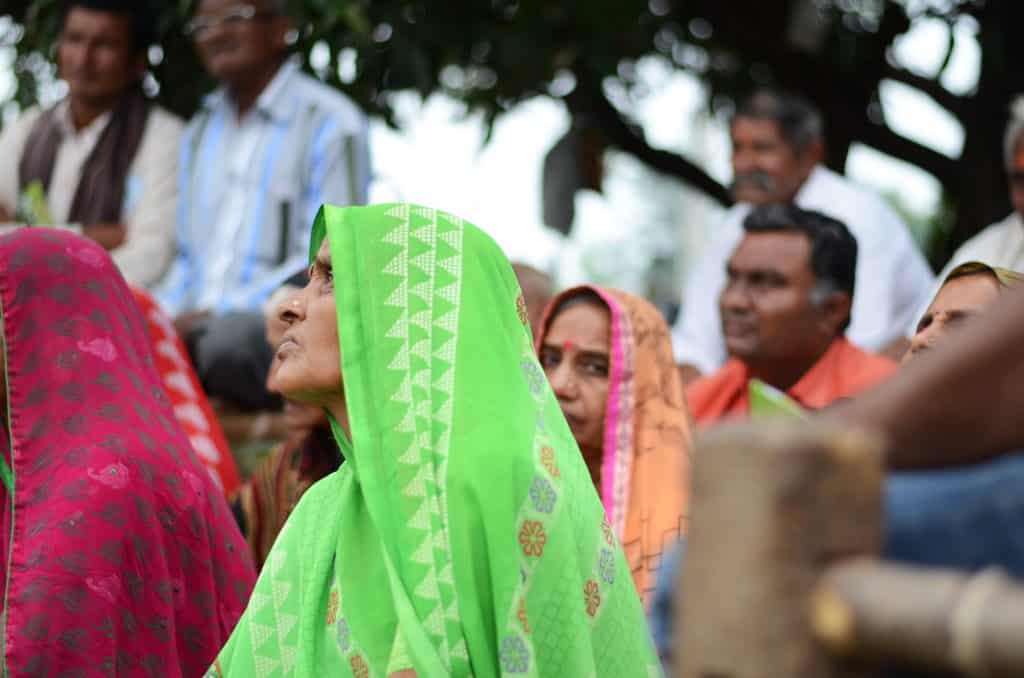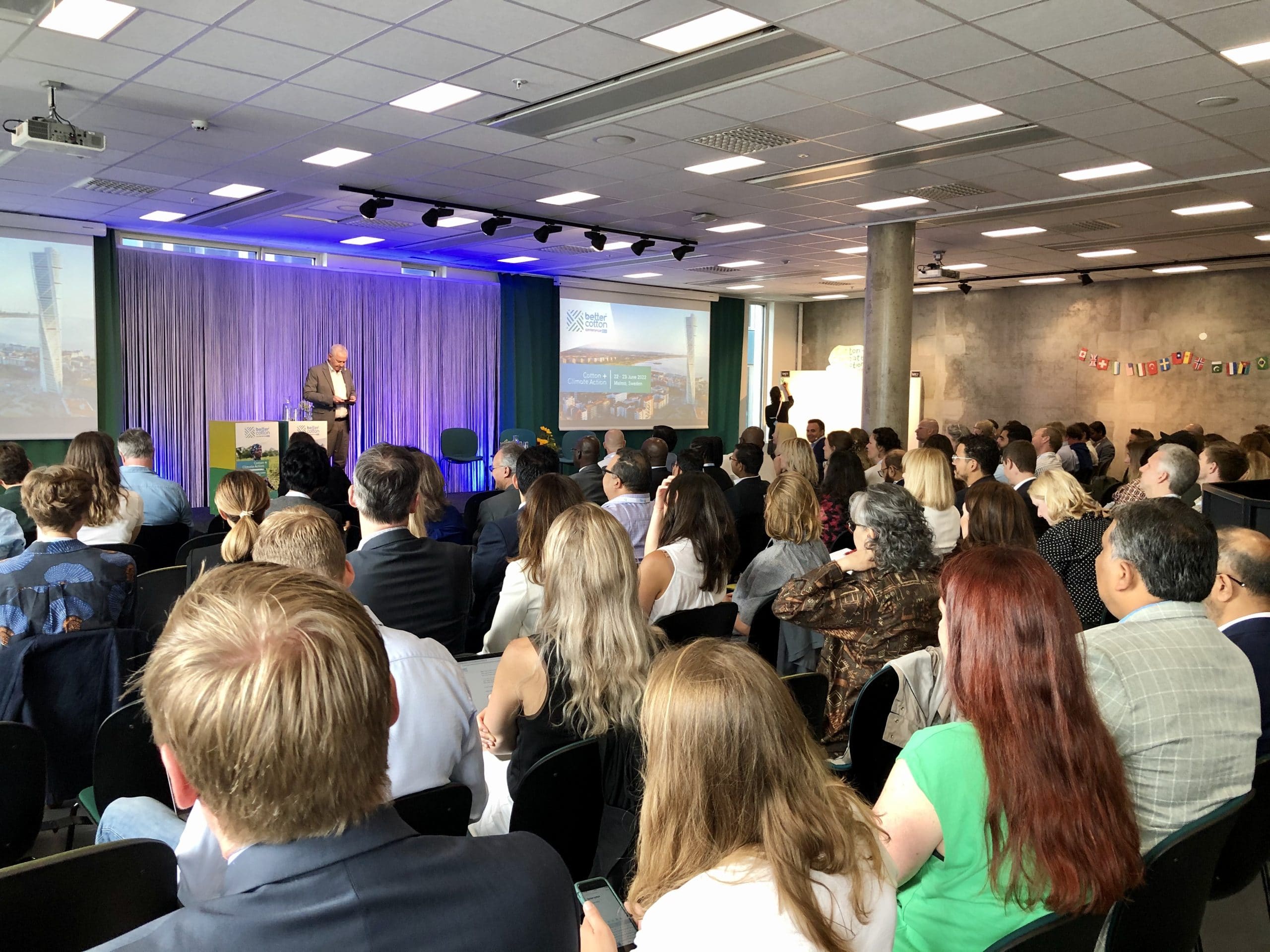Cotton production both contributes to and is vulnerable to climate change. It also has the potential of contributing to climate change mitigation, through carbon sequestration in soil for example.
Today’s impact of cotton has been estimated by the Carbon Trust at 220 million tonnes of CO2 equivalent emitted annually. With our scale and network, Better Cotton is meeting the climate crisis head on. We stand to help accelerate the transition to reduce emissions from cotton, the world’s most widely cultivated natural fibre. And importantly, we can help enable Better Cotton Farmers to be better prepared for climate change impacts by adapting their practices.
In this way, we’re supporting cotton farming communities to reduce the emissions from cotton farming, while also building their resilience to the changing climate.
How Climate Action sits at the heart of the Better Cotton Principles & Criteria
Throughout our Better Cotton Principles & Criteria, we have laid strong foundations to help reduce the carbon intensity of cotton farming and help farmers to adapt to climate change on the ground. In 2021, we launched a revision of the Principles & Criteria with a view to ensuring that they continue to reflect best practices, are effective and locally relevant, and support our ambitions to drive change in the cotton fields. The revision period is expected to run until June 2023.


Global GHG Study
To prepare the way for our Climate Approach and new 2030 GHG emissions reduction goal, in 2021, we undertook our first global GHG study, which assessed emissions from Better Cotton (or recognised equivalent standards) production constituting over 80% of licensed Better Cotton production across Brazil, India, Pakistan, China and the US.
The analysis broke down emissions drivers for each state or province per country and found that that GHG emissions from Better Cotton production across China, India, Pakistan, Tajikistan, and Turkey were on average 19% lower than comparison production. The largest emissions hotspot was fertiliser production, which accounted for 47% of total emissions from Better Cotton production. Irrigation and fertiliser application were also significant drivers of emissions application were also found to be significant drivers of emissions.
Climate Approach
Released in December 2021 as part of the Better Cotton 2030 Strategy, our Climate Approach is informed by a growing body of research on the intersection between cotton farming and climate change, the work of the Intergovernmental Panel on Climate Change (IPCC) and respects the goals of the Paris Agreement.
Importantly, it will enable us to support farmers to further mitigate their impact on climate change, adapt to its consequences and identify climate smart opportunities. Our approach continues to evolve, and the delivery will be an ongoing and collaborative effort between Better Cotton and our partners, while we continue develop our programme and seek funding to support our long-term goals.
Our New Climate Approach has three focus areas:
- Reducing cotton production’s contribution to climate change. Accelerate the transition of Better Cotton Farmers toward climate-smart and regenerative agricultural practices that reduce emissions and sequester carbon.
- Adapting to life in a changing climate. Equipping farmers, farm workers and farming communities to be more resilient to climate change impacts.
- Enabling a just transition. Ensuring that the shift towards climate-smart, regenerative farming and resilient communities is socially and economically inclusive.
What’s next?
By 2030, we aim to reduce greenhouse gas emissions per tonne of Better Cotton produced by 50% (compared to 2017 baseline).
Importantly, we’ll measure and report on our progress, using a set of robust indicators. As well as agriculture having a role to play in reducing emissions, it also has the potential to store large quantities of atmospheric carbon in the soil. Another of our impact targets for 2030 is soil health, and we will support farmers to implement climate-smart and regenerative agricultural practices that both reduce emissions, sequester carbon and improve soil health, such as cover cropping, reduced tillage, crop rotation and agroforestry.
Agriculture is part of the climate solution and has the potential to contribute to positive change. In the coming years, we will enhance and accelerate our efforts and continue to embrace new innovations to reach our targets. Finally, Climate Action is the theme for Better Cotton’s 2022 conference, where the sector will come together in June 2022 to collaborate on a more sustainable future for cotton.
2021 Annual Report
Access the report to read the original climate action article and learn more about the progress we are making in key priority areas.









































